Written by Yi-ting Sun, Edited by; Roberto Flore, Louise Beck Brønnum and Michael Bom Frøst.
Photo Credits: Roberto Flore, Julia Sick and Jonas Drotner Mouritsen
We were very excited to host our 3rd Monday Aperitivo 29th of January after our previous successful Monday Aperitivo in 2017. A concept where science and culinary techniques meet for a kitchen talk to stimulate appetite! This time, squids from the North took the stage of discussion, reflection and our palates.
The set-up
During the last few months, Nordic Food Lab has been working on Danish squids as part of the project, Smag for Livet. Our Monday Aperitivo seemed like the perfect occasion to disseminate some of the work from the lab and therefore Roberto Flore, Yi-ting Sun and Louise Beck Brønnum had choosen this subject for our 3rd Monday Aperitivo.
One of the presenters was Roberto Flore, the head of culinary research and development in Nordic Food Lab, who was introducing the culinary point of view through the dishes and products that he developed during the past few months in the lab. Futhermore, we were honored to have Paw Dalgaard from DTU, professor in Predictive Food Microbiology, who gave a scientific analysis of food safety concerns on both fresh and preserved squid. Last but not least, no Aperitivo is without a glass of appetite-provoking beverage. This Monday Aperitivo, a friend of the house, Raffaele Mor, wine master from Il buco, not only stimulated our tastebuds with the beauty of natural wine but shared his aesthetics and emotions of wine pairing.
Squids of the North
Squids, together with octopus and cuttlefish are all named “blæksprutte” in Danish. Indeed they are all cephalopods, but actually under different orders in taxonomy. Just like other cephalopods, squids have bilaterally symmetrical arrangement, and their whole body comprise of a big mantle, 2 fins, 8 arms and 2 long tentacles. In the past, this unique appearance made it often described as sea monsters in different sailor stories.
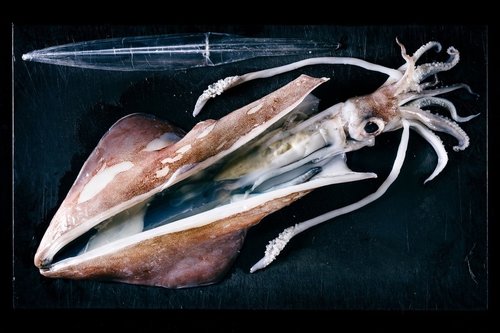
In Nordic gastronomy, even though squids are found in the surrounding sea, squids have not been incorporated into the northern food culture. Generally, the only impression of squids in the northern regions are as deep-fried rings of squid hidden under a layer of beignet dough, which to be honest is beyond recognition for this creature’s amazing flavor.
However, squids are considered as delicacies in many other cultures in Asia and Mediterranean areas: fully-dried squids used for stock in China; semi-dried shredded squids as snack is a popular product in both Taiwan and Japan; and Shiokara (塩辛), fermented squid viscera mixed with squid mantle strips, a typical appetizer in Japan.
Although high-end Danish restaurants already are working with different techniques to prepare and preserve squids, such as smoking or the squidtzel, served at Barr in late January 2018. Still, one could challenge the range of possible preparation methods in order to utilise squids more in the northern kitchens. But, developing new products also means lack of knowledge in food safety, such as shelf-life, and potential pathogens. This is a challenge that we, at Nordic Food Lab, have been facing for the past few months, and could also be a barrier for innovation in general.
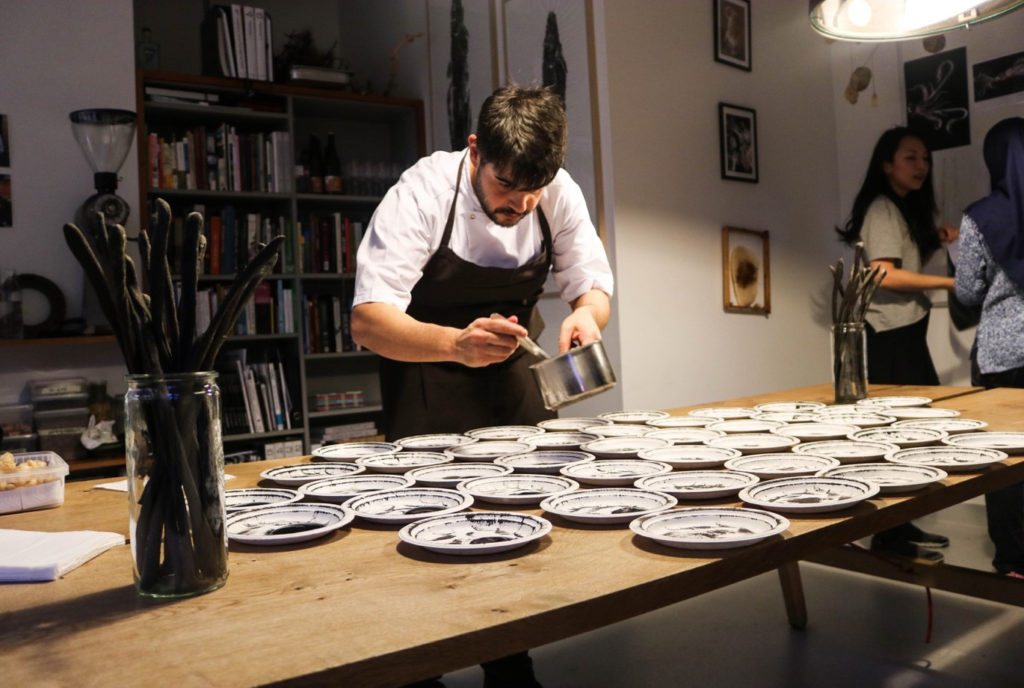
To pair or not to pair
The first plate, that kicked the event off, was a “Squid liver and puffed pork”: Focaccia made on sourdough served with coal-black sauce based on viscera of squid (ink and liver). The innards were slowly cooked together with garlic until a rich and thick sauce was obtained. Some would say, it has flavours comparable to that of Mexican mole. Crunchy and spicy puffed pork skin was served aside to give contrast to the very rich viscera sauce and fluffy oily bread.
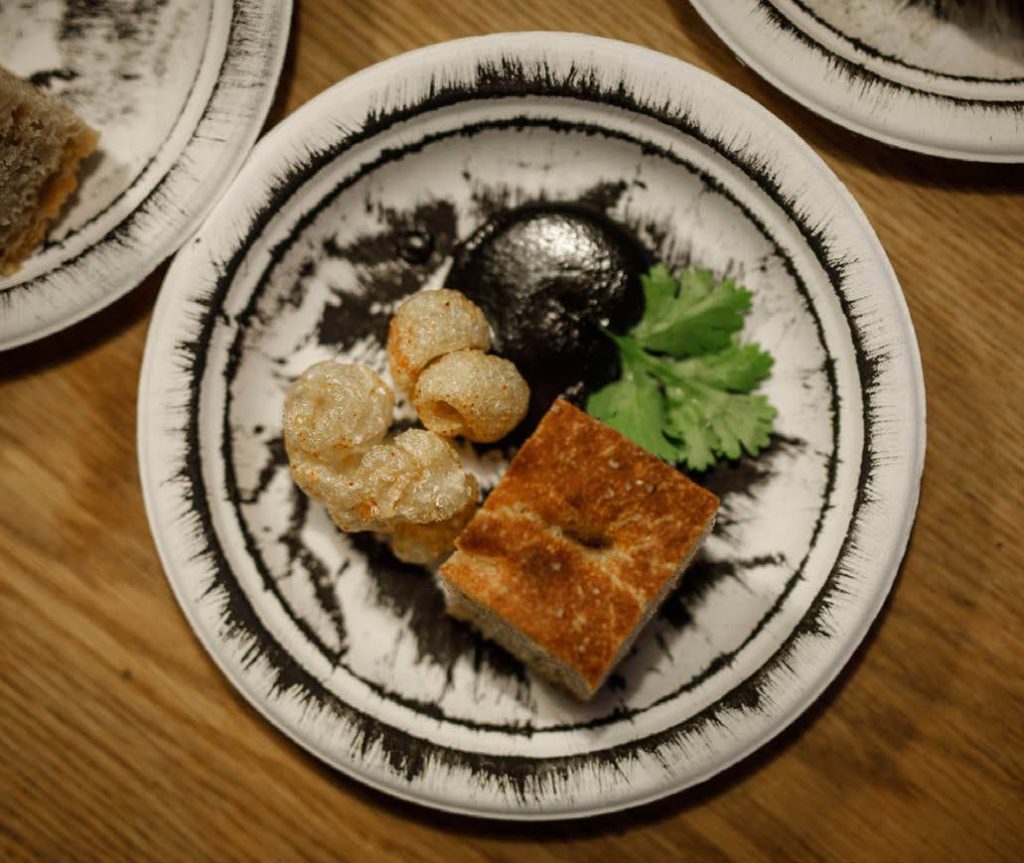
“Vino Bianco metodo Olimpia” from Cantina Giardino was Raffaele’s choice to complete the first serving: A sparkling wine with a yellow-to-amber color and characterized by its relatively high amount of tannins from the maceration and sour notes from the spontanous fermentation. The effervescence and astringency gave a refreshing mouthfeel to contrast the fattiness of the first dish. This pairing showed that a sommelier can purposely contrast the flavors between the wine and the dish to give a more diverse but complete sensation.
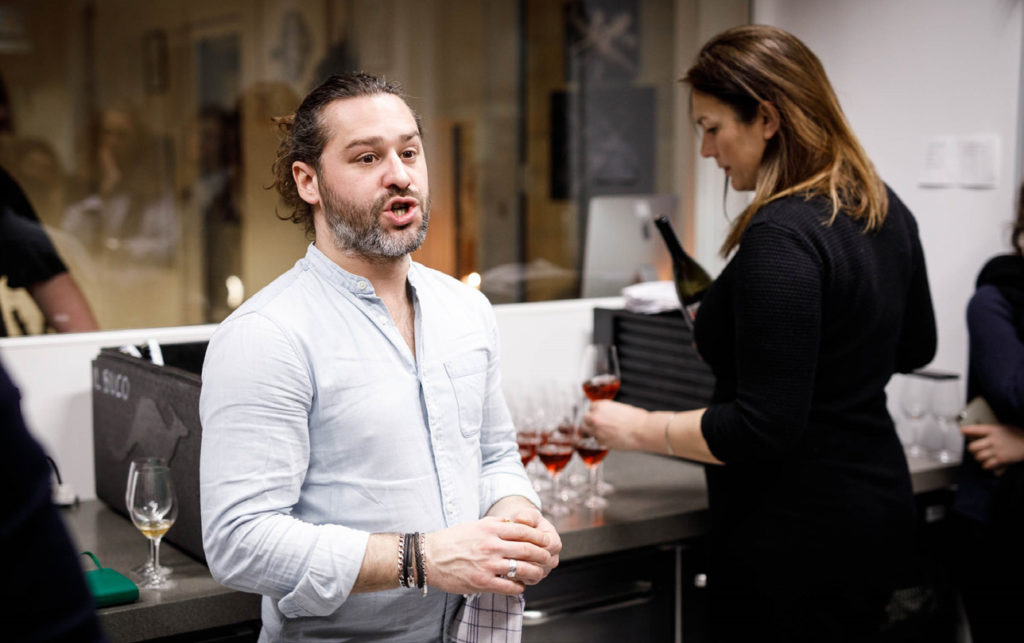
After thefirst bite, the guests consisting of chefs, food-lovers and researchers, moved to the kitchen where the 2nd round and different parts from squids, were served. “Pickled squid, roses and beets”. This dish was based on retractor muscles from squids (actually we called them as “the loins of squids” in the lab), which were pickled in rose petal vinegar and served with raw beetroot, rose oil and dill. Following, the prototype of canned squid arms in oil, which Roberto had worked on, were tasted. Along with these acidic and floral bites, “Rosé di Refosco” from Borc Dodon 2010 was in our glass. Spontaneously fermented but not fully dry, characteristic notes of sweetness and floral flavours were balanced out with mild astringency that accomplished the floweriness and sweetness of the squid to perfection. Not like the sparkling orange wine, the rosé matched the dish in line with the flavours. Savoring the similarities is another way a sommelier can choose to pair beverage and food.
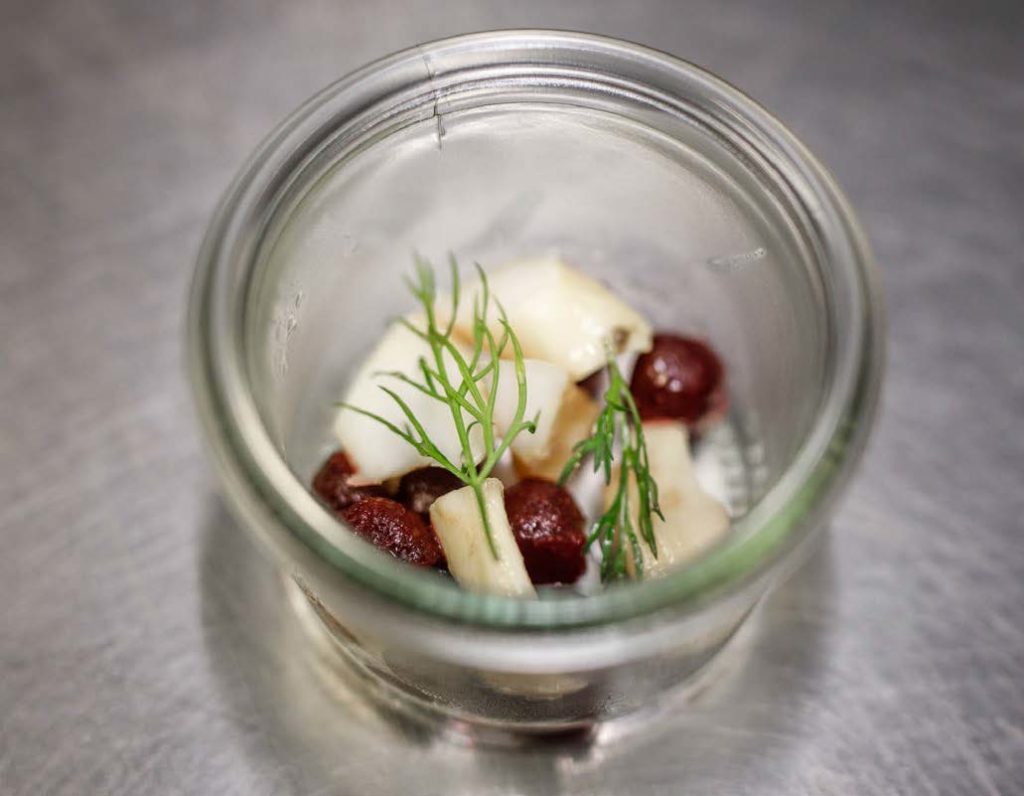
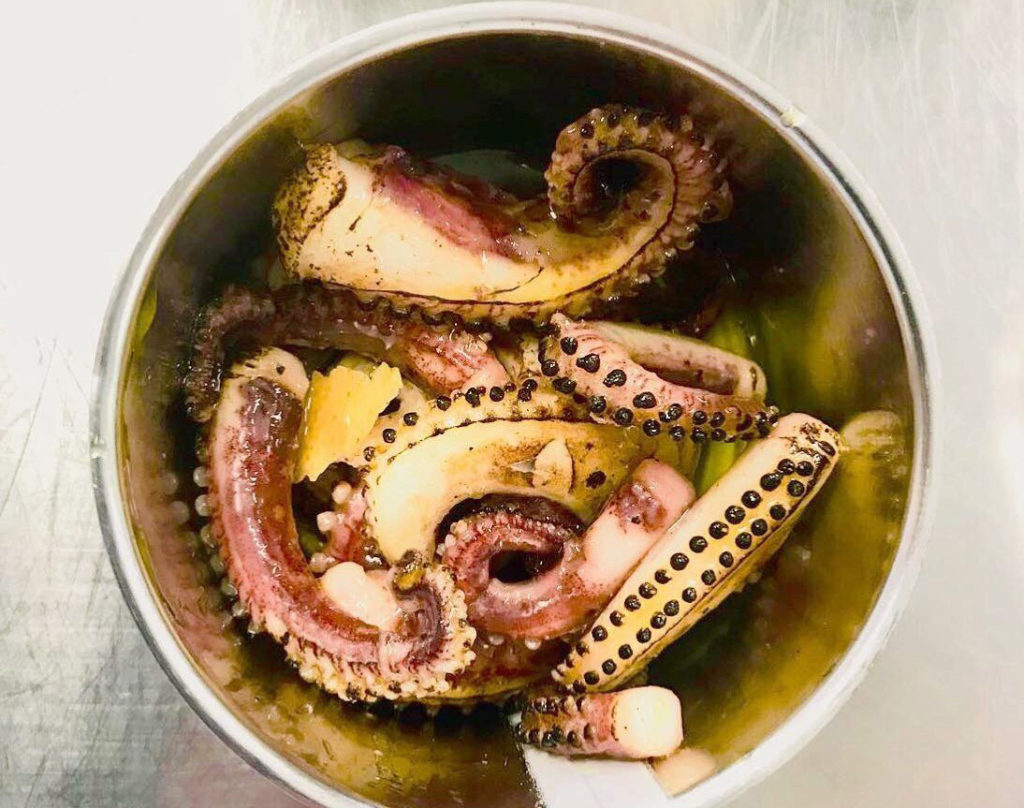
A question of life or death, but also deliciousness!
The semi-dried squid, developed by Roberto together Yi-Ting, and cured squid braids were this evening’s last savoury serving (More info about the products will be in our future post. Stay tuned!).
These servings led the kitchen talk towards safety control from Paw Dalgaard. A roller coaster ride went both up-and downsides from all potential hazards one could face when working with squids as well as effective control methods that could be implemented to assure product safety. Starting with parasites, passing through pathogens, such as Listeria Monocytogenes and Clostridium Boutulinum, the ride ended up with spoiling microorganisms and TMA enzymes that give off-flavours to squids. Luckily, all our products were predicted safe by Paw, due to good kitchen practices and hurdle approach which combined several preventive methods such as salting, lowering pH, drying, smoking, and other methods from the kitchen.
But dessert, was where all the magic happened.
Roberto Flore, originally from Sardinia, wanted to pay homage to his home island. He prepared a raw blended squid paste served in between of sugar glazed pana carasau bread, with drops of lemon verbena oil and a final touch of dried capers powder. The raw squid paste possessed a fatty and amazingly creamy texture together with a hint of natural sweetness from squids.
Rafaelle had chosen a glass of Sardinian “Malvasia di Bosa” produced by Gianmichele Columbu, just fitted like the cherry on a cake. The grapes harvested from 135 year old wine plants (meaning original pre-phylloxera European roots!) are growing along the Sardinian coast. Thus, a salty layer developed from the seabreeze, which could be tracked in the taste of the wine. Futhermore, the wine was oxidized by flor yeast, which gave the wine a complex body, with savory and nutty notes, as well as a bit astringency, which balanced the fatty but lightly-seasoned squid dessert.
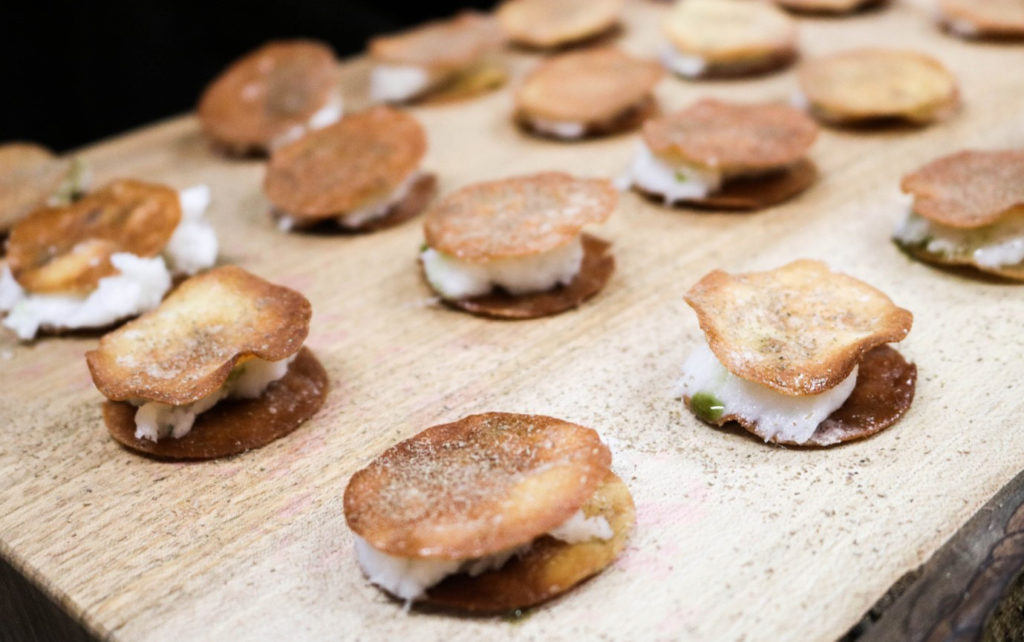
In summary, we had a great evening with both eye- and palate-opening experience. Thanks a lot to the guest speakers: Paw Dalgaard and Raffaele Mor, as well as our head chef, Roberto Flore.
Anyway, the ship has sailed and ready to explore more squi-deliciousness of the north!
By the way, a group of people from the lab are heading to Sardinia for an in-depth experience of squids. Stay tuned!
We are looking forward seeing you on our next Monday Aperitivo in March.
Read more about our guest speakers here:
Roberto Flore follow at Twitter or Instagram
Professor Paw Dalgaard,
Restaurant Il Buco In Nordic Food Lab, People, The Ocean & The Sea
